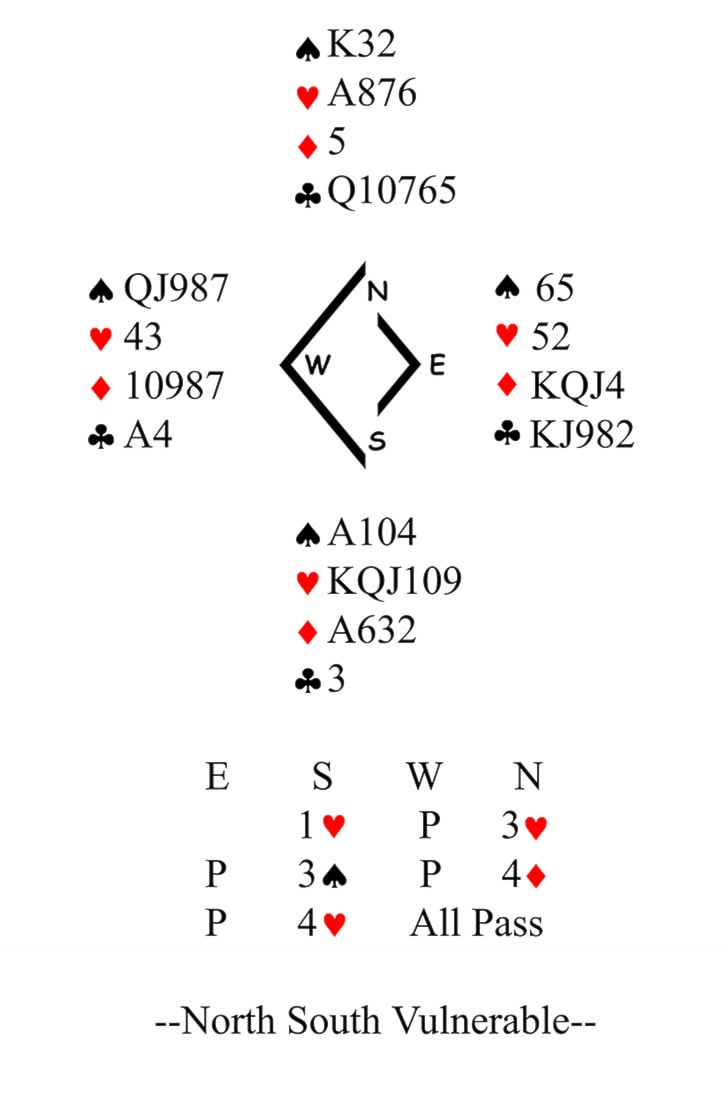In the last two columns, we saw the importance of not ruffing in the long-trump hand. In this column, the cross-ruff is an example where it is okay to ruff in the long-trump hand. One alternates ruffs in both the long and short-hands.
The bidding: South, with 14 high card points, opens one heart. North has an invitational hand of ten to 12 points with four-card support.
One can count distribution when a golden fit of eight or more cards has been found. Therefore, North has 12 points in support of hearts counting three points for the singleton.
A singleton is only two points with three-card support. However, a limit raise usually shows four-card support. With three-card support, North bids a new suit at the two-level and then bids three hearts. South has 16 points enough for game.
The Lead: The Queen of spades, the top of a broken sequence.
The play: Declarer wins the Ace and exits a club in preparation for a cross-ruff. The defenders know that they should play trump because the declarer did not. West wins the ace of clubs and exits a trump.
Declarer is almost ready for a cross-ruff. He must first cash all his side winners. If declarer does not cash the king of spades, it will be ruffed at the end of the hand once the defenders have pitched their spades when declarer is cross-ruffing.
Declarer then cross-ruffs the hand out.
Result: Declarer wins two spades, one round of trump, the ace of diamonds, four club ruffs and three diamond ruffs making five hearts for +650.
Note: If declarer draws trump, he only makes 10 tricks for +620.
